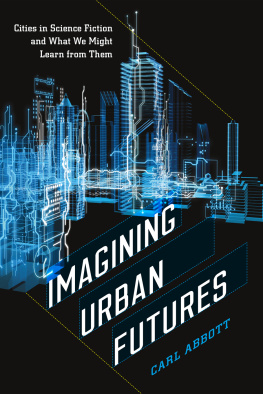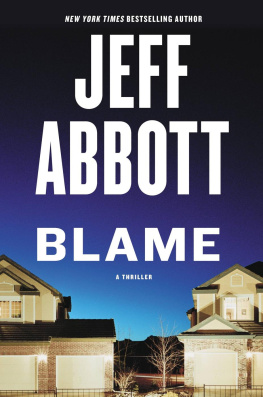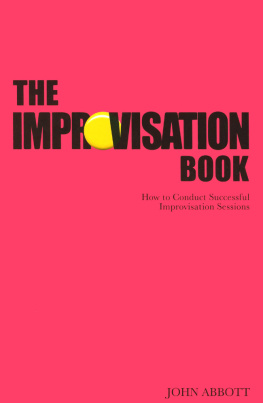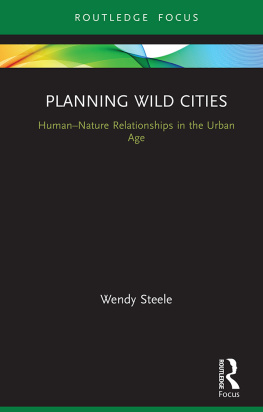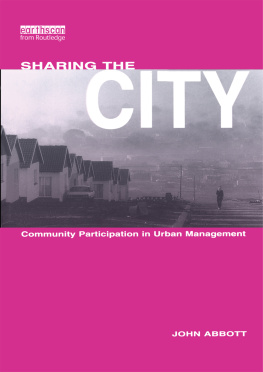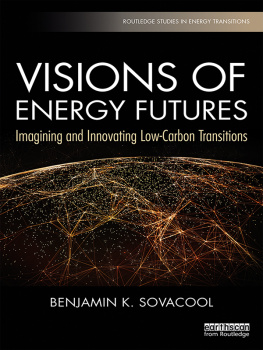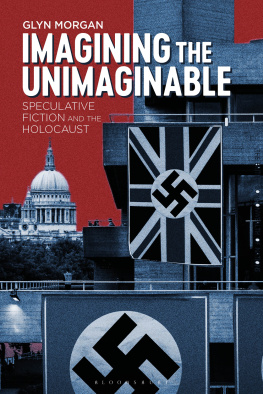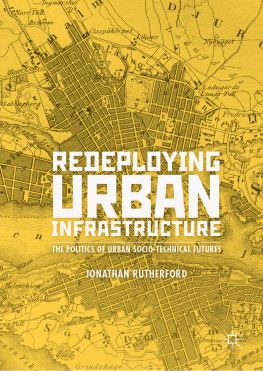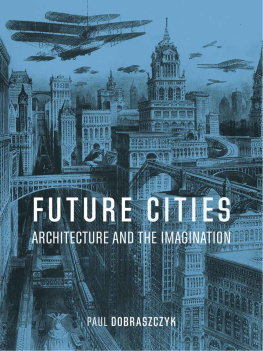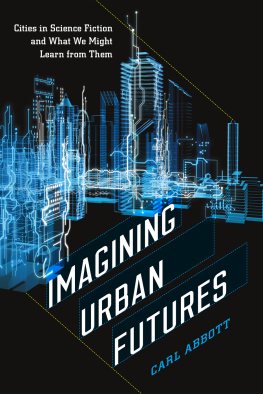Abbott - Imagining Urban Futures: Cities in Science Fiction and What We Might Learn From Them
Here you can read online Abbott - Imagining Urban Futures: Cities in Science Fiction and What We Might Learn From Them full text of the book (entire story) in english for free. Download pdf and epub, get meaning, cover and reviews about this ebook. year: 2016, publisher: Wesleyan University Press, genre: Art. Description of the work, (preface) as well as reviews are available. Best literature library LitArk.com created for fans of good reading and offers a wide selection of genres:
Romance novel
Science fiction
Adventure
Detective
Science
History
Home and family
Prose
Art
Politics
Computer
Non-fiction
Religion
Business
Children
Humor
Choose a favorite category and find really read worthwhile books. Enjoy immersion in the world of imagination, feel the emotions of the characters or learn something new for yourself, make an fascinating discovery.
Imagining Urban Futures: Cities in Science Fiction and What We Might Learn From Them: summary, description and annotation
We offer to read an annotation, description, summary or preface (depends on what the author of the book "Imagining Urban Futures: Cities in Science Fiction and What We Might Learn From Them" wrote himself). If you haven't found the necessary information about the book — write in the comments, we will try to find it.
Imagining Urban Futures: Cities in Science Fiction and What We Might Learn From Them — read online for free the complete book (whole text) full work
Below is the text of the book, divided by pages. System saving the place of the last page read, allows you to conveniently read the book "Imagining Urban Futures: Cities in Science Fiction and What We Might Learn From Them" online for free, without having to search again every time where you left off. Put a bookmark, and you can go to the page where you finished reading at any time.
Font size:
Interval:
Bookmark:

IMAGINING URBAN FUTURES
IMAGINING URBAN FUTURES
CITIES IN SCIENCE FICTION AND WHAT WE MIGHT LEARN FROM THEM
CARL ABBOTT
WESLEYAN UNIVERSITY PRESS  MIDDLETOWN, CONNECTICUT
MIDDLETOWN, CONNECTICUT
Wesleyan University Press
Middletown CT 06459
www.wesleyan.edu/wespress
2016 Carl Abbott
All rights reserved
Manufactured in the United States of America
Designed by April Leidig
Typeset in Whitman by Copperline Book Services
Hardcover ISBN: 978-0-8195-7671-2
Ebook ISBN: 978-0-8195-7672-9
Library of Congress Cataloging-in-Publication Data available upon request.
5 4 3 2 1
Cover photo: Shutterstock. Image ID: 367966991. Antiv.
CONTENTS
ONE |
TWO |
THREE |
FOUR |
FIVE |
SIX |
SEVEN |
EIGHT |
AFTERWORD |
ACKNOWLEDGMENTS
I like cities large and smalla good thing, since Ive been studying and writing about their history for over forty yearswhile recognizing the challenges that urbanization and urban life can present. In a previous book called Frontiers Past and Future: Science Fiction and the American West, I explored the ways in which American science fiction has adapted the different narratives that we have used to understand the English-speaking conquest and settlement of North America. This book is the complement and companion piece, an exploration of ways in which science fiction utilizes the stories that we tell about the mature societies and cultures that cities embody.
I have received feedback from the Chicago Urban History Seminar held at the Chicago Historical Society. The Alternate Realities reading group at Portland State University, organized by Annabelle Dolidon and including Tony Wolk and Grace Dillon, has helped me think about different ways to approach speculative fiction. I also received welcome comments and advice from science fiction scholars Carol McGuirk and Rob Latham, historian Robert Fishman, and an outside reader for the Wesleyan University Press. A portion of the introduction appeared in the online journal Deletions and a portion of in the online magazine Clarkesworld.
IMAGINING URBAN FUTURES
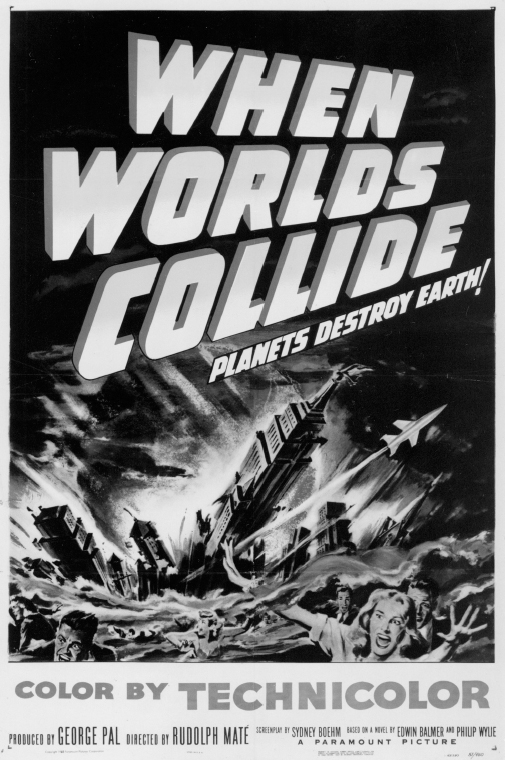
Winner of an Academy Award for special effects, the 1951 film When Worlds Collide is one of the most striking early examples of the disaster movie in which an external force lays low the cities of the Earth, in this case leaving only a handful of earthlings to escape in a highly streamlined rocket ship. Courtesy Paramount Pictures / Photofest Paramount Pictures.
INTRODUCTION
N othing says trouble like a city smashed to smithereens on screen. Meteors and earthquakes, tsunamis and glaciers, earthly monsters and alien invadersmoviegoers might think that the only thing science fiction does with cities is demolish them with big-budget special effects. Giant waves crash over New York in Deluge (1933) and When Worlds Collide (1951), an asteroid pulverizes it in Deep Impact (1998), and ice crushes it in The Day after Tomorrow (2004). Everyone knows that the star of Godzilla: King of Monsters (1956) has it in for Tokyo. Los Angeles takes hits in Earthquake (1974) and Independence Day (1996), whose flying saucer bad guys also take out New York, Washington, and Paris, itself soon reobliterated in Armageddon (1998). Not to be outdone, screenwriters for 2012 (2009) devised a planetary cataclysm to eradicate Los Angeles, Washington, Rome, and every other city lower than Tibet.
Look again and the picture is far more interesting. Cities certainly perish on the science fiction screen and page, but they also grow, thrive, and decline in complex and intriguing ways. Hit the science fiction section at your local library or used bookstore for the pure pleasure of browsing the covers. Among the exotic planetscapes, cosmic vistas, and battling starships are cities seen from above and below, from near and afar. Cities soar in the distant view of foregrounded heroes and shelter beneath transparent domes like gigantic snow globes. Tiny humans and all manner of other creatures clog street corners and thread their way among the intricate towers, tunnels, sky bridges, wiring, and plumbing of the coming metropolis. Artists bathe their visions with the patina of fantasy or the shimmer of high tech.
Wethe majority of humankindalready live in an urban world and share an urban future. Cities are home to a majority of our planets population, and they are gaining a greater edge over the countryside with each passing year. Sometime in the first decade of the present century, so far as demographers can calculate, more than half of humankind became city people. I wouldnt bet on the exact date, but the world crossed the fiftyfifty threshold between city life and rural life in 2008, according to the United Nations Department of Economic and Social Affairs. China passed the same milestone at the end of 2011, with an official count of 691 million city dwellers. By the end of the century, the worldwide ratio of city to country is likely to be three to one or even four to one, the balance already reached in Western Europe and North America.
Since our mundane future will be so decidedly urban, it is no surprise that the science fiction imagination has generated cities by the bucketful. Cities are background and setting for stories on and off future Earth, often assumed as a natural part of coming society. They are sometimes an active part of the plot, places whose characteristics are essential to a storys contests and conflicts. At times they become actors in their own right, intervening and shaping as well as framing the action. The future, the native land of science fiction, will be an urban future for all foreseeable generations. Its like a syllogism:
Science fiction is about the future.
The human future will be urban.
Therefore, science fiction should be about urban futures.
Voyage outward from Earth. Settlers on the moon will likely live in underground citiesat least thats what Larry Niven and Allen Steele propose. Martian pioneers will start off in domed cities and then transition to surface cities as terraforming takes effectat least as Kim Stanley Robinson has projected that planets future. On Venus cities will float in the thick atmosphere, says Pamela Sargent. Intrepid extraterrestrial homesteaders may hope to make new lives under new skies and stars, but they will need cities and towns to supply their tools and market their cropsat least that is how Robert Heinlein envisioned the future on Ganymede. And sometimes creative imaginations have run wild to fashion implausible superfantastic cities that are built into miles-deep canyon sides, that pierce the stratosphere like huge stalagmites, that raft together on the deep sea, that span huge chasms on vast platforms, that englobe entire planets, and that even disassemble and reassemble themselves to creep across the landscape.
Waive your berth on the next interstellar departure and you may still find yourself in the future of a present-day city. We can experience the effects of climate change on Boston and Washington and economic stagnation on Los Angeles and Detroit. We can navigate an imagined megacitysuper-high-rise Chicago or cybernetic Tokyo or hypertrophied Shanghai. We can choose among dozens of different Londons and New Yorks and explore the rise of the Global South in future Bangkoks, Saigons, and Istanbuls where a few social or technological tweaks can lead to fascinatingly different cities.
Next pageFont size:
Interval:
Bookmark:
Similar books «Imagining Urban Futures: Cities in Science Fiction and What We Might Learn From Them»
Look at similar books to Imagining Urban Futures: Cities in Science Fiction and What We Might Learn From Them. We have selected literature similar in name and meaning in the hope of providing readers with more options to find new, interesting, not yet read works.
Discussion, reviews of the book Imagining Urban Futures: Cities in Science Fiction and What We Might Learn From Them and just readers' own opinions. Leave your comments, write what you think about the work, its meaning or the main characters. Specify what exactly you liked and what you didn't like, and why you think so.

